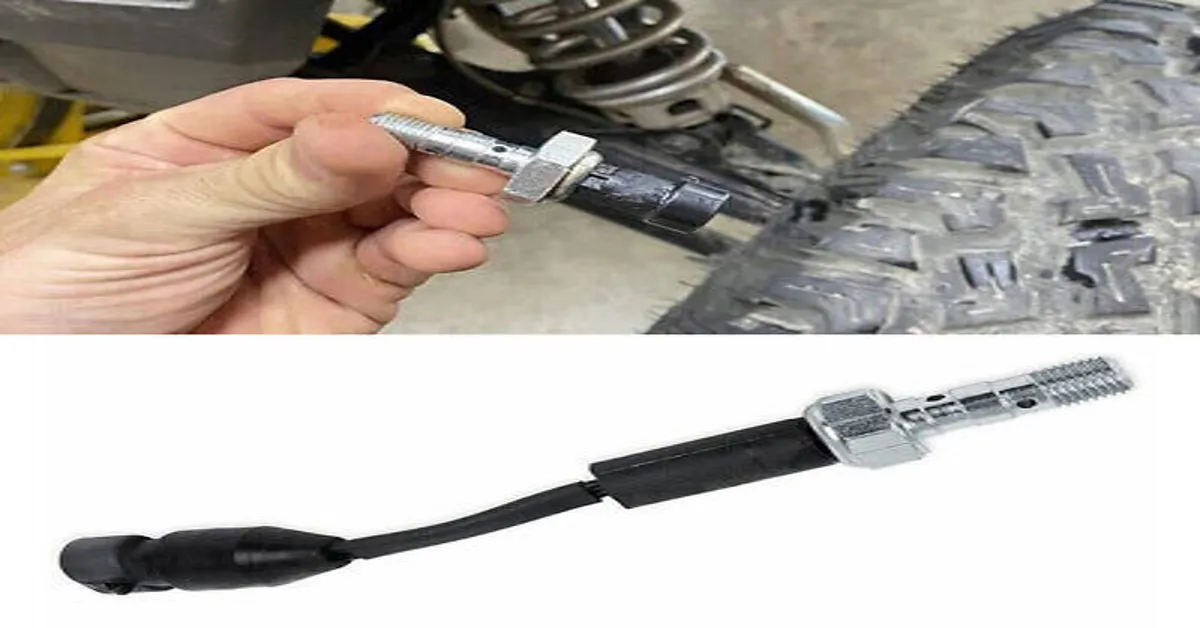In the heart of a bustling city, amidst the roar of traffic, there’s a silent hero that ensures the safety of every commuter the brake line pressure switch. Picture a sleek car gliding to a halt at a crowded intersection. The driver, unaware, relies on a tiny component under the hood that monitors and responds to the mere force of a foot.
It’s a dance between human intention and mechanical precision, choreographed by this unsung sentinel of the road. As drivers, we seldom ponder the intricate symphony of technology that works flawlessly to guide us to our destinations. But for those with a keen eye for automotive excellence, the brake line pressure switch is more than just a part; it’s the pivot on which safety and control balance.
In this pulsating narrative, we’ll dive deep into the world where pressure is not a stressor but a signal that keeps us secure. Join us on a journey into the lifeblood of your vehicle’s braking system, and discover how this crucial piece of engineering is key to your peaceful commute.
Introduction to Brake Line Pressure Switches
In the intricate dance of a vehicle’s braking system, the brake line pressure switch plays a crucial role, akin to a watchful choreographer. This unassuming yet pivotal component ensures that each press of the pedal translates into a safe and timely stop. It’s the maestro of pressure, dictating when the brake lights illuminate and, in some systems, interfacing with the ABS to keep your vehicle poised even on the slickest of stages.
Understanding its operation is not just for the mechanically minded it’s a snippet of knowledge that could one day prove as vital as the switch itself. The switch, nestled within the network of brake lines, is a beacon of safety, rising to action when the hydraulic pressure from your foot’s nudge surges through the brake fluid. It’s a silent sentinel that only springs to life as you apply pressure, ensuring that drivers behind are alerted to your intentions with the bright flash of brake lights.
This subtle yet significant component may not be the star of the show, but without it, the entire performance of your vehicle’s stopping power could falter.

Anatomy of a Brake Line Pressure Switch
In the intricate dance of automotive mechanics, the brake line pressure switch plays a pivotal role, much like a maestro conducting an orchestra. This unsung hero resides within the depths of your vehicle’s brake system, a sentinel diligently monitoring the pressure of the brake fluid. It springs into action when you press the brake pedal, ensuring that your car comes to a halt with grace and precision.
The magic of the brake line pressure switch lies in its ability to detect the exact moment when the fluid’s pressure reaches the threshold, signaling the brake lights to illuminate. This is not just about functionality; it’s about safety, communicating your intentions to fellow drivers with unmistakable clarity. Imagine a world where this switch falters; it would be akin to a pianist missing a key note during a concert.
The result? A cascade of motoring mishaps. That’s why understanding this small but mighty device is crucial for any driver worth their salt. It’s not merely a switch; it’s the guardian of your vehicle’s stopping power, and by extension, your peace of mind on the road.
Installation and Maintenance
When you’re hurtling down the road, the importance of a reliable brake line pressure switch becomes as clear as day. This unsung hero of vehicular safety sits quietly within your braking system, ready to spring into action at the mere hint of your foot pressing down on the pedal. Think of it as the vigilant gatekeeper that signals your brake lights to illuminate, warning drivers behind you that you’re slowing down or coming to a stop.
But it’s not just about signaling; the brake line pressure switch also plays a pivotal role in the modulation of hydraulic pressure in your brake lines. In essence, it ensures that the force you apply to the brake pedal is aptly translated to the clamping force needed to bring your vehicle to a halt. This intricate dance of pressure and response is what makes a smooth stop more than just a convenience it’s a cornerstone of automotive safety.
So, the next time you’re in stop-and-go traffic, take a moment to appreciate the brake line pressure switch for its silent yet vital contribution to your journey. It’s the kind of component that proves that in the automotive world, the smallest parts often make the biggest impact.
Troubleshooting Common Issues
When it comes to vehicle safety, one component that often flies under the radar is the brake line pressure switch. This unassuming piece of technology is like the unsung hero of your braking system a vigilant sentinel that ensures everything is working just as it should. When you press the pedal, it’s this switch that decides to light up the signal on your dashboard or to engage the brake lights, informing those behind you that you’re slowing down.
It’s an intricate dance of pressure and precision, with the switch measuring the force within your brake lines to activate the necessary responses. Think of it as the conductor of an orchestra, subtly yet powerfully cueing in different sections as needed. With a faulty switch, the symphony of your car’s safety features could miss a beat, leading to potential mishaps.
That’s why understanding and maintaining your brake line pressure switch isn’t just smart—it’s crucial. So, let’s brake it down (pun intended) and dive into the workings of this vital component, ensuring your journeys are as safe as they are smooth.
Upgrading Your Brake Line Pressure Switch
In the intricate dance of a vehicle’s braking system, the brake line pressure switch plays a pivotal role, often unseen yet absolutely essential. Imagine this switch as the unsung hero that ensures your car halts gracefully at every red light. It’s the silent sentinel that activates your brake lights, signaling your intentions to fellow road travelers, thereby preventing mishaps.
But how does it work? Well, nestled within the labyrinth of brake lines, this switch springs into action when hydraulic pressure rises as you press the brake pedal. It’s a marvel of engineering precision, responding to the force of your foot to alert the brake lights instantaneously. The switch is a testament to the meticulous orchestration of safety and communication on the road.
Navigating through the mechanics of your vehicle, the brake line pressure switch may not command headlines, but it certainly deserves our appreciation. It’s a fine example of form meeting function, a tiny component ensuring your journey remains safe and your communications clear. Remember, the next time you brake and your lights warn the car behind you, it’s all thanks to this ingenious little switch.
Important Notice for readers
Please be aware that the information provided here concerning the brake line pressure switch is critical for maintaining the safety and functionality of your vehicle’s braking system. It is essential to understand the role of this component in monitoring brake pressure and ensuring effective communication between your vehicle’s brake system and warning indicators. Regular maintenance and prompt attention to any issues with the brake line pressure switch can prevent potential hazards on the road.
Always consult a professional mechanic for inspection and repair to guarantee your vehicle remains in top condition for a safe driving experience.
Frequently Asked Questions (FAQs)
What is the role of a brake line pressure switch in a vehicle’s braking system?
A brake line pressure switch is an essential component that monitors the pressure in the brake lines and sends signals to the brake lights or an ABS system to indicate braking action. When you press the brake pedal, hydraulic pressure builds in the brake lines, activating the switch, which in turn triggers the brake lights and informs other drivers that you’re slowing down or stopping. It may also communicate with the ABS to help manage braking force and prevent wheel lockup during hard braking.
How can I tell if my brake line pressure switch is failing?
Symptoms of a failing brake line pressure switch include brake lights that either won’t turn on or won’t turn off, which could be a hazard on the road. You might also notice that the ABS warning light on your dashboard is illuminated, indicating a problem with the system. If you encounter these issues, it’s important to have your vehicle inspected as soon as possible to maintain proper braking safety.
Is it possible to replace a brake line pressure switch on my own?
If you have mechanical experience and the proper tools, you may be able to replace the brake line pressure switch yourself. However, it involves dealing with the braking system, which is critical for safety, so it’s recommended to consult with a professional mechanic. If you choose to do it yourself, you’ll need to ensure the vehicle is safely lifted, the brake system is properly bled to remove air, and the new switch is correctly installed without introducing contaminants to the brake fluid.
What types of vehicles use a brake line pressure switch?
Most modern vehicles, including cars, trucks, motorcycles, and even some bicycles with hydraulic braking systems, use a brake line pressure switch. The switch is a universal component in vehicles with hydraulic brakes, as it plays a vital role in brake light operation and, in some cases, the anti-lock braking system (ABS).
Can a malfunctioning brake line pressure switch affect ABS performance?
Yes, a malfunctioning brake line pressure switch can directly affect the performance of the ABS. Since the switch is responsible for signaling the pressure in the brake lines, a faulty switch can send incorrect information to the ABS control unit. This may lead to improper ABS activation or failure to engage when needed, compromising the vehicle’s braking effectiveness and safety.
How often should a brake line pressure switch be checked or replaced?
A brake line pressure switch isn’t typically a maintenance item, so it doesn’t have a regular replacement interval. However, it should be checked whenever you have your braking system serviced or if you experience any of the symptoms of a failing switch. Regular brake system inspections by a professional mechanic will help ensure all components, including the pressure switch, are in good working order.
Conclusion and Safety Reminder
Throughout this discussion, we’ve delved into the critical role of the brake line pressure switch in vehicular safety. Its function as a sentinel in the braking system underscores its importance. Reflect upon the intricate dance of mechanics and electronics that keep us safe on the road.
Let this knowledge serve as a reminder of the technological marvels we often take for granted. As we navigate the paths ahead, let us not overlook the small yet vital components that protect us. May this insight into the humble brake line pressure switch inspire a deeper appreciation for the unseen guardians in our vehicles.
Read More
https://brakesline.com/ford-fiesta-brake-hose/
https://brakesline.com/sportster-front-brake-line/
https://brakesline.com/brake-line-going-out/
https://brakesline.com/brake-line-zx6r/
